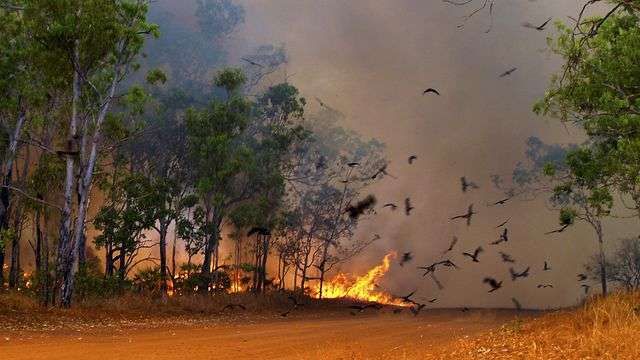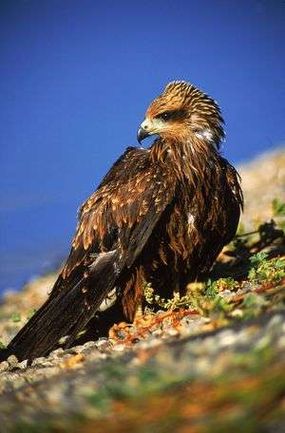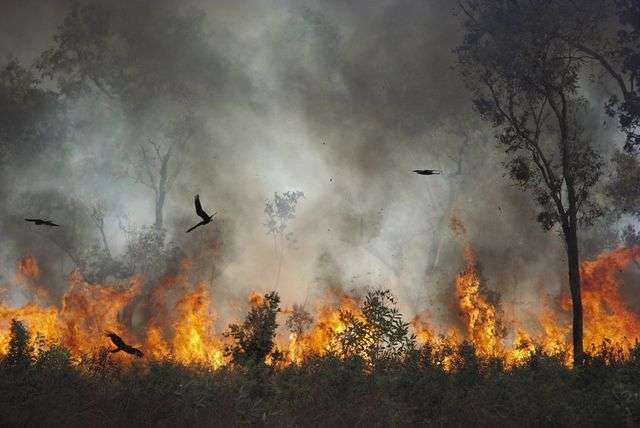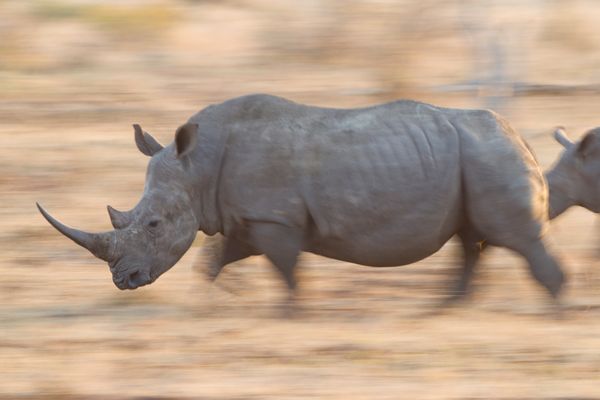
You'll find the black kite, the world's most abundant bird of prey on four of the Earth's seven continents. With a well-earned reputation as a clever predator that chases down food in places other birds fear to fly, the kite may even create its own dining opportunities if food is in short supply.
These birds are highly adaptive, living in urban and rural areas. And their willingness to eat most anything has made them at home in a variety of environments across Australia, Europe, Africa and Asia.
Advertisement
But that's not what makes the black kite (Milvus migrans) more interesting than other predators. What makes these birds unusual is the fact that they fly toward fires rather than away from them, like most sensible birds. (And let's be honest, like you and I probably would, too.)
Why would an animal do such a thing? Black kites follow fires specifically to catch prey trying to escape the flames — think insects and small birds and mammals.
"They may come in from several miles away, with the column of smoke serving as a signpost or a flashing neon light," says John Peter, a senior writer and editor with the conservation group BirdLife Australia, via email.

While flying toward the flame is unusual in the birding world, you can also find the idea that kites may take embers from one fire and use them to start another fire to flush out more prey. According to one report, fire and land managers in the northern savanna regions of Australia say that they have seen black kites pick up burning sticks and carry them from a burning or burned area to dry grass and drop the stick to start a new fire.

"There is not much written evidence chronicling this behaviour," writes BirdLife Australia editor Sean Dooley in an email, "but I know that it is fairly well known anecdotally in the Northern Territory among birders and Aboriginal groups."
One such account comes from the 1966 Douglas Lockwood book "I, the Aboriginal." He described seeing kite hawks deliberately setting fire to grass and bushland.
"I have seen a hawk pick up a smouldering stick in its claws and drop it in a fresh patch of grass half a mile away," wrote Lockwood, "then wait with its mates for the mad exodus of scorched and frightened rodents and reptiles. When the area was burnt out the process was repeated elsewhere."
Though Lockwood's account makes for a convincing story, no other verifiable accounts have been recorded or reported. But even if that tactic hasn't been witnessed by science yet, kites remain crafty hunters.
For instance, there's an account of black kites dropping bread in a river, then flying off to watch the mayhem. When small fish congregated around the bait, the kite dived in for dinner.
"This [example] shows black kites baiting for fish," says Dooley. "It does not mention firesticks, but certainly shows that they have that adaptive behaviour, and it may not be a stretch from bread to burning sticks."

The adaptive behavior can be seen in other ways the kites feed, as well.
"They are largely a scavenging species, often taking roadkill from the roadsides, as well as other carrion, taking scraps from rubbish dumps, abattoirs, piggeries, sewage ponds and other similarly disgusting places," says Peter. "They're also attracted to other places of disturbances, such as farm machinery or moving herds of cattle, which may disturb potential prey that they can catch. And [they] will readily forage in places where there are plagues of insects, rabbits, mice or native rats."
Clearly black kites are not the bird world's pickiest eaters, but the jury's still out on whether they're the pyromaniacs of the sky.
As Dooley says, "The circumstantial evidence is quite high, but I am not sure we have a smoking gun ( or stick) yet."
Looks like it's a little too early to call in the rhino squad.
Advertisement
